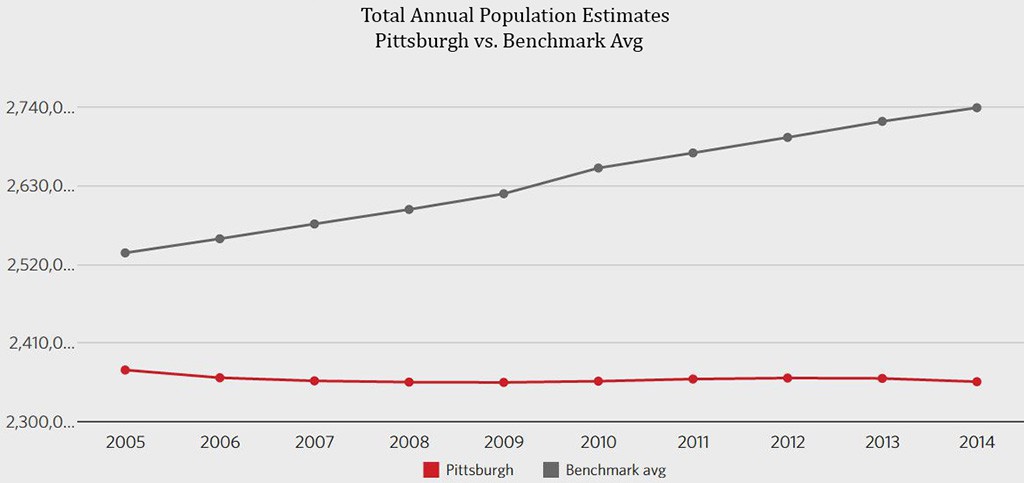Recent decrease reflects region’s economics, demographics
A recent decline in the region’s population is linked to an aging population and limited job growth, data suggest.
The Pittsburgh Metropolitan Statistical Area lost 4,597 people from July 2013 to July 2014, according to the latest U.S. Census Bureau population estimates. The five-year population trend, however, is one of stability.
The latest year-over-year estimates bring the total population to 2,355,968 people living in the seven-county MSA, which includes Allegheny, Armstrong, Beaver, Butler, Fayette, Washington and Westmoreland counties.
Allegheny County’s population declined for the first time since 2010. Of the MSA counties, only Butler showed a slight gain in population.
The data suggest the one-year drop in total population is strongly influenced by the change in natural population, which is the number of births and deaths in the region. In southwestern Pennsylvania, 3,444 more people died than were born during that period. Of the 15 Pittsburgh Today’s benchmark regions, the Pittsburgh MSA was the only one to post a natural population loss.
The population decline is not surprising, says Chris Briem, regional economist at University of Pittsburgh Center for Social and Urban Research. The Pittsburgh MSA is one of the few regions in the country still experiencing natural population decline.
The size of the region’s population of residents aged 65 and older has played an influential role in natural population trends for decades. After a brief decline, it is once again rising. Census estimates show that seniors accounted 18 percent of the Pittsburgh MSA population in 2013, well above the national rate of 14 percent.
Still moving in
More people moved into the region than left it for the seventh consecutive year, although the net migration gain of 411 people was small.
The gain was largely due to an increase in international migration, which is the movement into and out of the region of people from other countries. International migration added 3,217 people to the region during the recent one-year period.
That softened a decline in domestic migration, which is movement of people within the United States. The Pittsburgh MSA was not alone. Only 6 of the 15 benchmark regions experienced positive domestic migration that year.
“Most domestic migration in the U.S. is an economic migration, or a flow towards jobs or in search of jobs or reflecting of that,” says Briem. “As the nation came out of the recession you see some job growth elsewhere in the U.S. and you see a lot of people who might have been moving here were finding opportunities elsewhere. That probably brought that number down in the last year.”
Despite the recent down year, the total Pittsburgh MSA population has remained stable over the past five years, gaining a little more than 1,000 residents.





